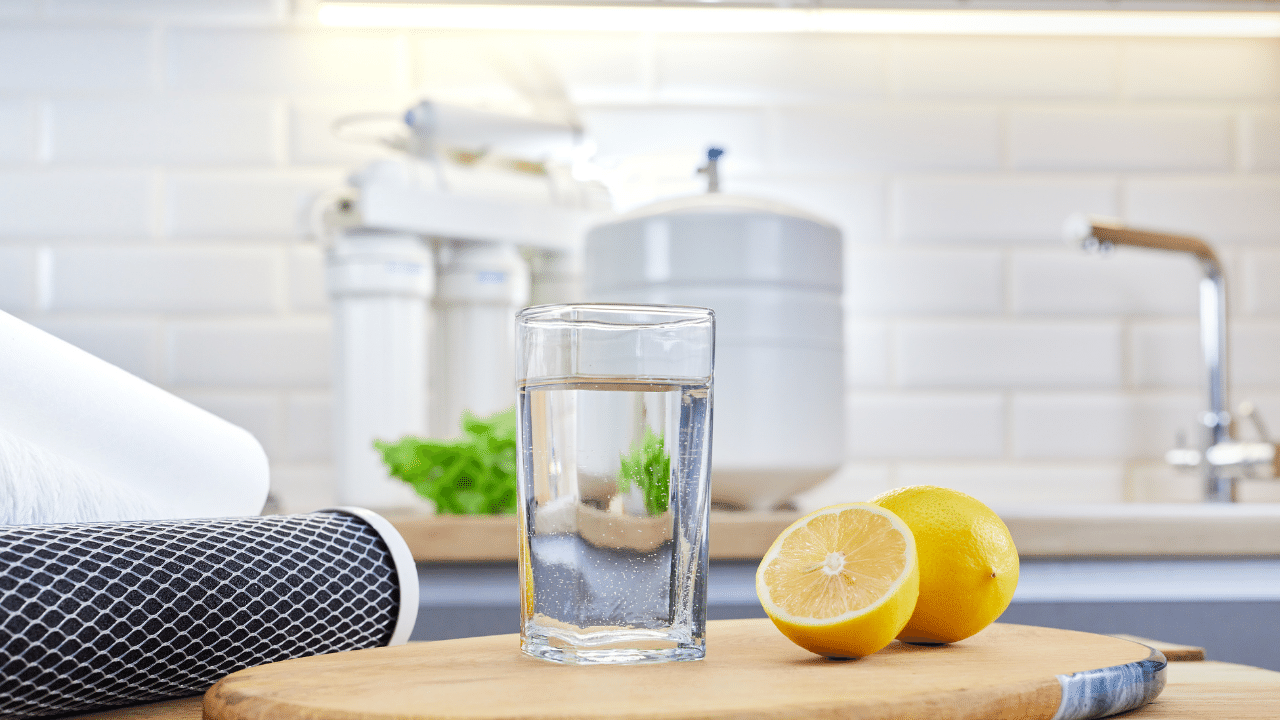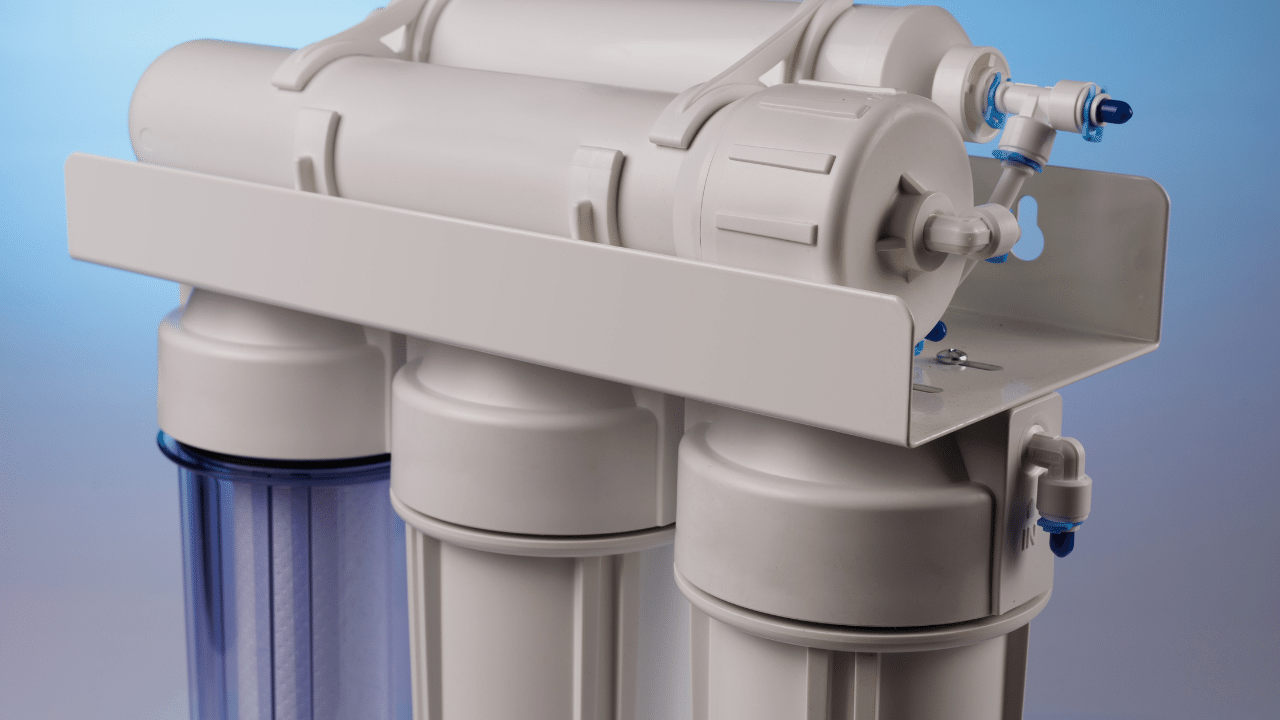Reverse Osmosis Water Softener
- Do your research.
- No sales commission on final price.
- Lower prices better equipment.
- Our units are assembled in San Antonio, Texas.
Call for Pricing! We will be happy to quote over phone.
Financing Available with Approved Credit!
What is the Reverse Osmosis

Reverse osmosis (RO) is a sophisticated filtration process that has become synonymous with purity and efficiency in the realm of water treatment. It is heralded for its ability to remove impurities and contaminants that many other filtration methods cannot. But what exactly is reverse osmosis, and how does it work?
At its core, reverse osmosis is a process where water is forced through a semi-permeable membrane under pressure. This membrane is designed to allow water molecules to pass through while blocking larger molecules, such as dissolved salts, bacteria, and chemicals. The term “reverse osmosis” arises from the fact that the process operates against the natural osmotic gradient—hence “reverse”—which normally moves water from a low solute concentration to a high solute concentration until equilibrium is achieved.
The reverse osmosis process begins with the introduction of feedwater, which is pre-treated to remove large particles and chlorine that could damage the RO membrane. The water then encounters a high-pressure pump that increases the water pressure on one side of the RO membrane. This pressure must be greater than the osmotic pressure naturally occurring in the feed water to “reverse” the water flow direction.
Once the pressurized water is pushed against the semi-permeable membrane, the smaller water molecules are forced through the microscopic pores, leaving behind contaminants such as salts, minerals, bacteria, viruses, and other impurities. These rejected impurities are then flushed away in a stream of waste water, commonly referred to as brine or reject stream.
The purified water that emerges on the other side of the membrane is called permeate or product water. This water is usually further treated through post-filtration, which can involve carbon filters or other methods to remove any remaining tastes or odors, resulting in high-quality drinking water.
Reverse osmosis water softener systems are highly versatile and can be scaled from small under-the-sink systems for residential use to massive industrial-scale operations. They are used not only for drinking water purification but also for a variety of applications such as desalination, pharmaceutical production, and food and beverage processing.
One of the most significant advantages of reverse osmosis is its ability to remove up to 99% of all contaminants, including particles as small as individual ions, making it one of the most thorough forms of filtration available. Moreover, it is a technology that doesn’t require the use of chemicals for the purification process, offering an environmentally friendly alternative to other treatments.
However, there are considerations to bear in mind. Reverse osmosis systems require a considerable amount of water; they typically discharge several gallons of wastewater for every gallon of purified water produced. Furthermore, the process removes beneficial minerals from the water, which may need to be replenished. Additionally, energy requirements and membrane maintenance can contribute to operational costs.
In conclusion, reverse osmosis stands as a modern marvel in water purification technology. Its unparalleled ability to filter out microscopic contaminants renders it indispensable in settings where water purity is paramount. As access to clean water continues to be a critical issue worldwide, reverse osmosis will undoubtedly play a vital role in providing safe, potable water for all. Whether for home use or industrial applications, reverse osmosis is not merely a method of filtration but a cornerstone of modern water treatment solutions.
Benefits of the Reverse Osmosis

Here are some benefits of reverse osmosis:
- High-quality water: Reverse osmosis systems can effectively remove a wide range of contaminants from water, including bacteria, viruses, heavy metals, pesticides, pharmaceuticals, and dissolved solids. This results in high-quality, purified water that is free from potentially harmful substances.
- Improved taste and odor: RO systems eliminate unpleasant tastes and odors caused by chlorine, sulfur, and other chemicals. The result is fresh-tasting, odorless water that enhances the overall drinking experience.
- Health and safety: Reverse osmosis removes contaminants that can pose health risks, such as lead, arsenic, fluoride, and nitrates. By providing clean and safe drinking water, RO systems contribute to better health and reduce the likelihood of waterborne diseases.
- Convenience and cost-saving: Having an RO system at home eliminates the need for purchasing bottled water, which can be costly and contribute to plastic waste. With reverse osmosis, you can have an unlimited supply of purified water right from your tap, reducing expenses and environmental impact.
- Versatility: Reverse osmosis can be used for various applications beyond drinking water, such as purifying water for aquariums, hydroponics, ice makers, and coffee machines. It provides a reliable and consistent source of purified water for different needs.
- Sustainability: RO systems consume less energy compared to other water treatment methods, making them more environmentally friendly. The technology allows for water conservation by reducing the amount of wastewater produced during the purification process.
In summary, reverse osmosis offers numerous benefits, including high-quality water, improved taste and odor, enhanced health and safety, convenience, cost-saving, versatility, and sustainability. It is an effective and efficient method for purifying water and ensuring its purity for various applications.
Process of the Reverse Osmosis

Residents of San Antonio insist that their drinking water be fresh and clean, and one way to make sure of this is through reverse osmosis, which filters harmful chemicals and pathogens from drinking water. Our professionals at Simple Water Softeners are pleased to install this system for both our commercial and residential clients.
Diffusion is the key to a reverse osmosis system. In an RO system, the molecules of water move though membranes from a higher to lower concentration. The reverse part is because the fresh water does not pass through to dilute contaminated water, but leaves contaminated water to replenish water that is already fresh. The membranes in a good RO system tend to block substances with a molecular weight above 100 grams per mole. Since water has a molecular weight of only about 18 g/mol, it can go through the membrane more easily than the sometimes very large molecules that make up chemicals and far more easily than viruses or bacteria. There are even some RO membranes that block ions such as calcium, sodium and chlorine whose molecular weight is less than 100.
Other contaminants that can be treated with RO are:
• Arsenic
• Nitrates
• Nitrites
• Fluoride
• Copper
• Lead
• Inorganic mercury
• Radium
• Uranium
• Some organic pesticides
Filter membranes in most RO systems are made of polymers or cellulose acetate and are about .25 microns thick. A micron equals one millionth of a meter, so these filters are very fine. They can be arranged in several configurations including being wrapped around a perforated tube or placed in layers before they’re enclosed in some kind of housing.
Before the water passes through a membrane, an RO system adjusts the pH level of the water then prefilters it. Profiteering is necessary because the water can have particulates that can clog the membrane. To prefilter the water, it’s passed through a material that can be sand, charcoal or a deionizer. Then, the water is pumped through the RO membrane and cleansed of contaminants, which are drained away as the clean water is stored in an accumulator tank.
It is true that RO systems used to waste a great deal of water when they worked, but the technology has advanced to the point where they waste less and less water. Another problem was that the contaminants could build up over time in the membrane module, but this can also be corrected by changing the main filter on the unit. The membrane is encapsulated with the other ones so it is changed out each time giving you a higher quality of water.
PH levels can be increased by adding an additional filter this will make the water around an 8 on the PH chart.
Our professionals at Simple Water Softeners are pleased to install reverse osmosis systems for both commercial and residential buildings in San Antonio Texas and environs. Give us a call at (210) 960-2555.
Request a Free Estimate Today
Please use the form below to request a free estimate and we’ll be back in touch with you as soon as possible. Alternatively you can give us a call at (210) 960-2555 for immediate Pricing and scheduling.


